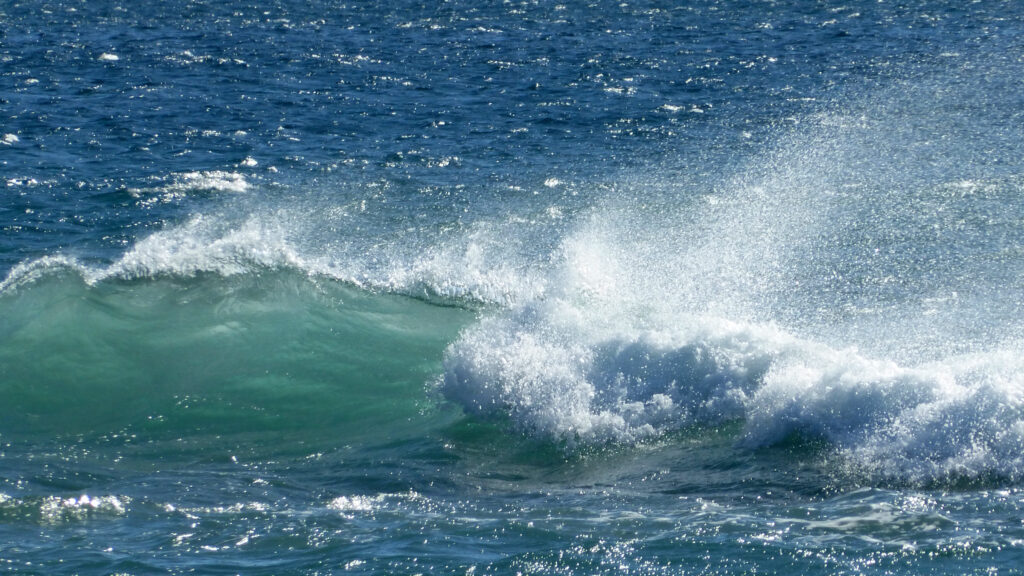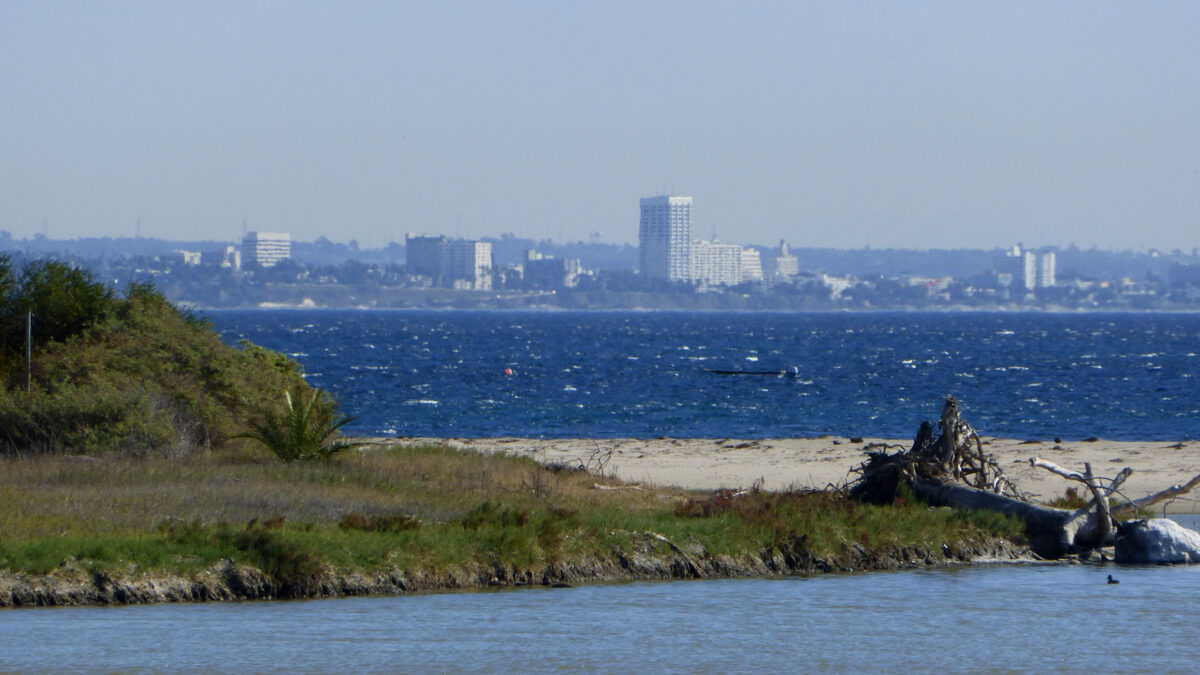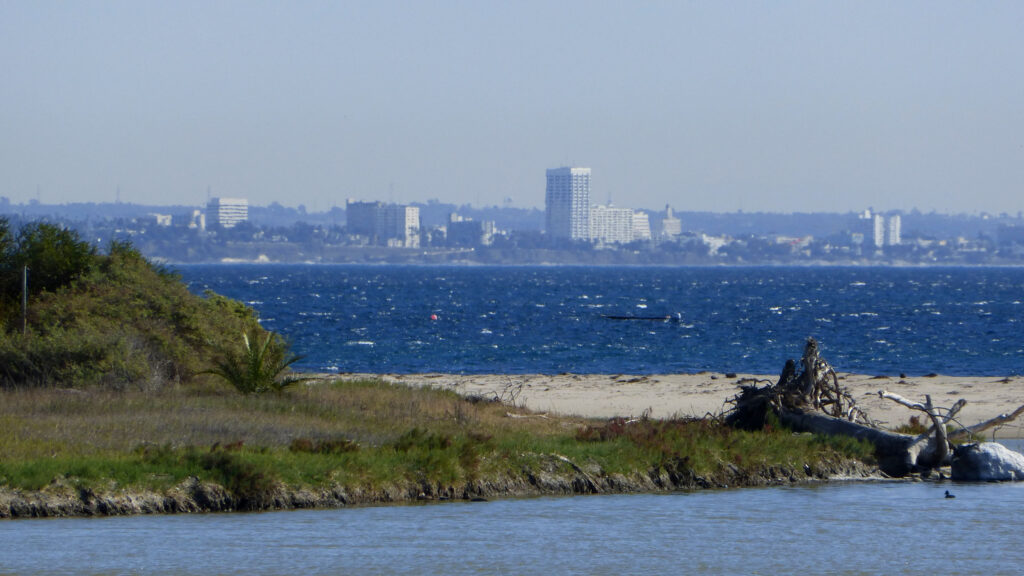
This year’s continuous Santa Ana wind conditions have created a season of extremes: warm days, cold nights, fiery sunsets, and an ocean pressed so smooth and flat by the relentless wind that it looks like watered silk.
There’s a distinct smell to the Santa Anas this time of year—dust and eucalyptus and sun-baked chaparral and sometimes a frightening hint of smoke. This is a time of waiting. Everyone holds their breath, waiting for the winds to die and the red flag fire warnings give way to winter rain.
In the brilliant 1945 Pressburger and Powell film I Know Where I’m Going, Dame Wendy Hiller’s character is stranded by a gale-force wind and prays desperately for the weather to change. Anyone who has lived through a wind-driven fire in the Santa Monica Mountains can appreciate the intensity of that prayer.
The Santa Ana winds go by a lot of names. Some people meld the syllables together to make the name Santana, others call these fierce desert winds the red wind, the devil’s breath, or the devil’s wind, but the winds apparently get their name from Santa Ana Canyon, in Orange County, where the phenomenon was reportedly once thought to originate.
It’s unclear if the name was bestowed by Spanish settlers or later arrivals. However, the theories that the name derives from Satan or from an Indian word meaning evil wind seem to be entirely urban legends. It seems equally unlikely that the name comes directly from the saint, since her feast day is celebrated in July, a time of year when Santa Ana winds are least likely to occur. And the tempestuous Mexican military leader Antonio Lopez de Santa Anna, who is also sometimes credited for the name, also seems unlikely, since he never visited California and had no part in its history.
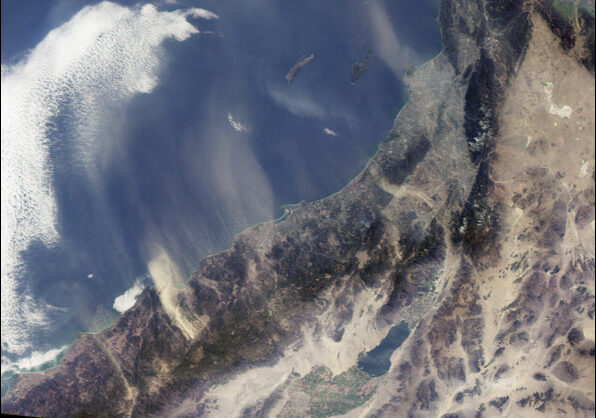
The Chumash must have been very familiar with the winds, but their names for the phenomenon have not survived, although it’s said that the name Simi derives from a Chumash term for the little white clouds that often accompany the wind.
Robert Fovell, a professor at UCLA in the department of Atmospheric and Oceanic Sciences, has examined the Los Angeles Times archive in search of the etymology of the name, but found nothing more exotic than the place name. According to Fovell, the earliest reference to the Santa Anas in the Times dates to 1881, just one year after the newspaper began publication.
One of the earliest items Fovell found is a letter to the editor dated 1893, complaining about the name and its connection to the community of Santa Ana. The letter-writer, an Orange County resident, laments that the winds are misnamed. The name, the writer insists, leads “nine out of every ten persons in the East” to conclude that the Santa Ana wind is “peculiar only to the immediate vicinity surrounding and contiguous to the city of Santa Ana.”
“These winds are an exceedingly unpleasant feature, especially in the fall before the rains have laid the dust.” The writer recognizes that the winds “take the name of Santa Ana by reason of their passage through the Santa Ana Mountain canyon, which is shaped very much like a large funnel” but insists it is “not a Santa Ana wind any more than it is a Los Angeles, San Bernardino, Riverside or San Diego wind.”
Whether saintly, demonic or simply meteorological, we aren’t the only ones to experience this type of wind phenomenon. In the European Alps it’s the Foehn or föhn; in Provence, the Mistral; in Canada, the Chinook; in Argentina, the Zonda; and in Japan, the Oroshi.
One of the traditional Provençal santons—Nativity figures that decorate family and community creches at Christmas in Provence—is a shepherd holding his hat to keep it from blowing away in the Mistral. In the German-speaking part of Switzerland folk traditions attribute the föhn to the passing of a supernatural hunter and his pack of hounds. Perchta, a pre-Christian goddess who still lingers on in folk tradition throughout parts of Northern Europe, leads another kind of wild hunt and is also associated with this type of wind, sometimes called a “snow-eater.”
Most winds of this type begin as cold air in an area of high pressure. As the cold air travels around the high pressure system (clockwise in the Northern Hemisphere; counterclockwise in the Southern Hemisphere) it gains speed and is squeezed into the surrounding low pressure areas. The wind is heated through compression and gains speed as it pours through mountain canyons like water down a drain.
Winds like the Santa Anas have a special Greek name: Katabatic, which means “to drain”, or “flow downhill”. While the Santa Ana can reach speeds in excess of 70 mph, the Alaskan Williwaw, also a katabatic wind, has been clocked at over 140 mph.
In many parts of the world, this type of wind is thought to cause madness and illness. In Germany they even have a special word for it: Föhnkrankheit. In Southern California madness isn’t nearly as much of a worry as fire. All of the major wildfires in the Santa Monica Mountains have occurred during Santa Ana windstorms.
Along with the fear of fire, the devil wind really does bring a host of lesser ills: migraines, allergies and nosebleeds, among them. Also static electricity that plagues the cats and transforms long hair into Medusa’s snakes. The threat of an SCE PSPS—Public Safety Power Shutoff—is a new Santa Ana impact, but the winds have always disrupted life, downing powerlines, trees, branches, and palm fronds; and generating clouds of dust that cover every surface.
At the beach, wind-driven sand scours the shore. The wind has the power to flatten the surf sweep hapless kayakers and paddleboarders out to sea. In the hills, the wind screams down the canyons, breaking branches, sucking the moisture out of the vegetation; and tipping over the occasional cyclist or high-profile vehicle.
Frederick Hastings Rindge, who purchased the entire Topanga Malibu Sequit Rancho in 1892, expressed an oddly optimistic view of the devil winds in his poetic collection of essays Happy Days in Southern California:
“At this season begin to blow the Santa Annas [sic], the fierce autumn wind storms, — dreaded, to be sure, but zephyrs, compared with cyclones. Three days they blow, and often precede a rain. They are a blessing in disguise, for beside their sanitary, microbe-dispelling effects, they also drive the dormant seeds hither and thither, to distribute them equally on the surface of the land. This task accomplished, down pour the early rains and up come, as by magic, the living green grasses out from the browned hills and fields…”
Joan Didion, who lived in Malibu in the 1970s, takes a more fatalistic view of the wind in Slouching to Bethlehem:
“The violence and the unpredictability of the Santa Ana affect the entire quality of life in Los Angeles, accentuate its impermanence, its unreliability. The wind shows us how close to the edge we are.”
Raymond Chandler paints yet another picture of the winds in his short story Red Wind:
“There was a desert wind blowing that night. It was one of those hot dry Santa Anas that come down through the mountain passes and curl your hair and make your nerves jump and your skin itch. On nights like that every booze party ends in a fight. Meek little wives feel the edge of the carving knife and study their husbands’ necks. Anything can happen. You can even get a full glass of beer at a cocktail lounge.”
It isn’t all bad. When the winds drop we are left with the illusion of summer: bright sun and vivid blue sky and sea. Unexpected vistas are revealed: the Los Angeles skyline emerges from the haze and smog; the Channel Islands appear like the lost lands of legend out to sea. From the top of Tuna Canyon, San Clemente Island, usually hidden by the marine layer, makes a rare appearance beyond Catalina Island. At night, the Point Fermin lighthouse flashes in the darkness from across the bay, while Orion, his faithful hound at his heels, strides across a brilliant field of stars, once the red glow of sunset has faded.
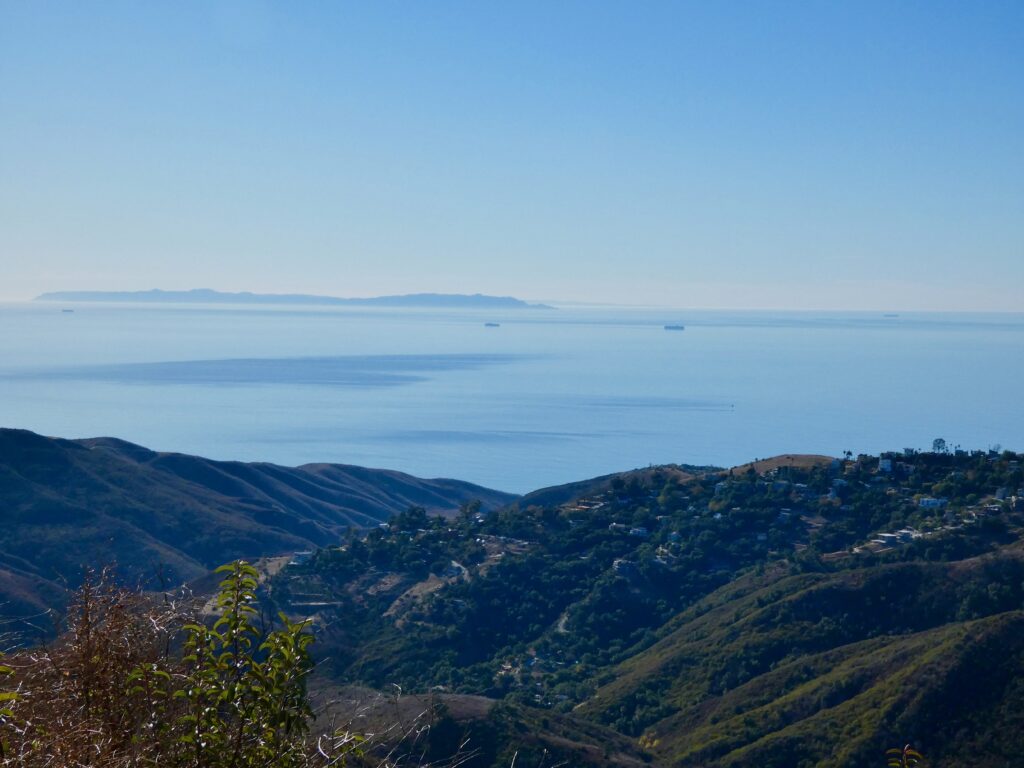
The Santa Anas can occur almost any time but tend to peak between Thanksgiving and New Years. My mom remembers spending one of her first California Thanksgivings at the beach in Malibu on a Santa Ana day in the 1950s. For my parents, who both grew up in places with snow and ice from November until March, it seemed like a miracle. Nearly 70 years later, it still does.
